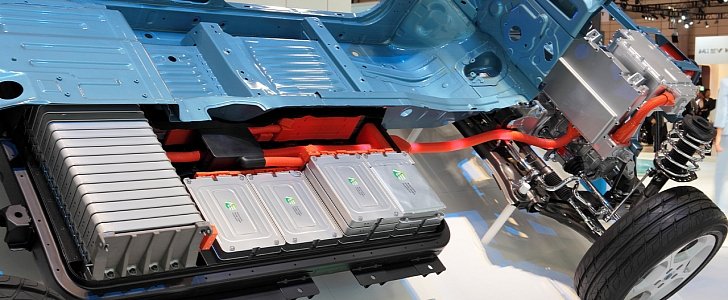The Toyohashi University of Technology in Japan has unveiled the prototype of an electric vehicle that operates without batteries.
The team behind it has been working on the project for the last five years, and the prototype was publicly unveiled last Friday.
The vehicle receives energy from the road through individual steel paths embedded in the road network. The energy is then safely transmitted to the vehicle through the tires, which feature unique steel plates in the road.
To prove their concept, the University built a short stretch of road to drive their prototype on it. The electrified road is only 98 feet long (29.8 meters), and the prototype was driven at a top speed of around six miles per hour (10 km/h).
Professor Takashi Ohira, the test driver and team member, said that “acceleration was smooth, and the ride was comfortable,” The Japan Times notes.
As usual with new technologies, inductive charging for electric cars has been discussed for several years, but no solution appropriate for public use has been developed so far.
The researchers at the Japanese university in the prefecture of Aichi have shown a solution that is safe to use on public roads, because there will be no transfer of electricity through unsealed connectors. That would have posed an immense safety risk for all road users.
However, developing vehicles that will use this technology instead of better batteries will be a tough challenge, as there are no roads with inductive charging built anywhere. So, while this idea and its proof of concept are worthy of praise, researchers still need to develop a solution that will be affordable for governments to use and for automakers to integrate into their vehicles.
Inductive charging for electric cars has been shown in prototype form before as a solution for parking lots. Instead of plugging a vehicle into a socket to charge it, all the driver had to do was to place the car in a particular parking spot. Unlike the induction road, an idea researched in several locations around the world, inductive charging in parking lots is more plausible as a technology for current and future electric cars.
The vehicle receives energy from the road through individual steel paths embedded in the road network. The energy is then safely transmitted to the vehicle through the tires, which feature unique steel plates in the road.
To prove their concept, the University built a short stretch of road to drive their prototype on it. The electrified road is only 98 feet long (29.8 meters), and the prototype was driven at a top speed of around six miles per hour (10 km/h).
Professor Takashi Ohira, the test driver and team member, said that “acceleration was smooth, and the ride was comfortable,” The Japan Times notes.
As usual with new technologies, inductive charging for electric cars has been discussed for several years, but no solution appropriate for public use has been developed so far.
The researchers at the Japanese university in the prefecture of Aichi have shown a solution that is safe to use on public roads, because there will be no transfer of electricity through unsealed connectors. That would have posed an immense safety risk for all road users.
However, developing vehicles that will use this technology instead of better batteries will be a tough challenge, as there are no roads with inductive charging built anywhere. So, while this idea and its proof of concept are worthy of praise, researchers still need to develop a solution that will be affordable for governments to use and for automakers to integrate into their vehicles.
Inductive charging for electric cars has been shown in prototype form before as a solution for parking lots. Instead of plugging a vehicle into a socket to charge it, all the driver had to do was to place the car in a particular parking spot. Unlike the induction road, an idea researched in several locations around the world, inductive charging in parking lots is more plausible as a technology for current and future electric cars.

